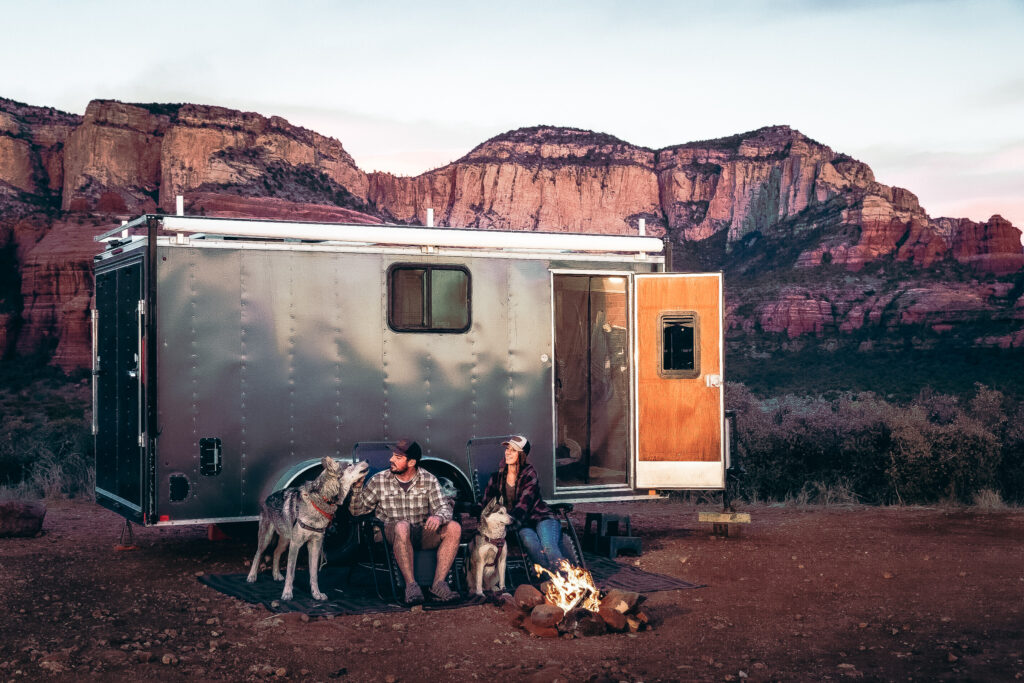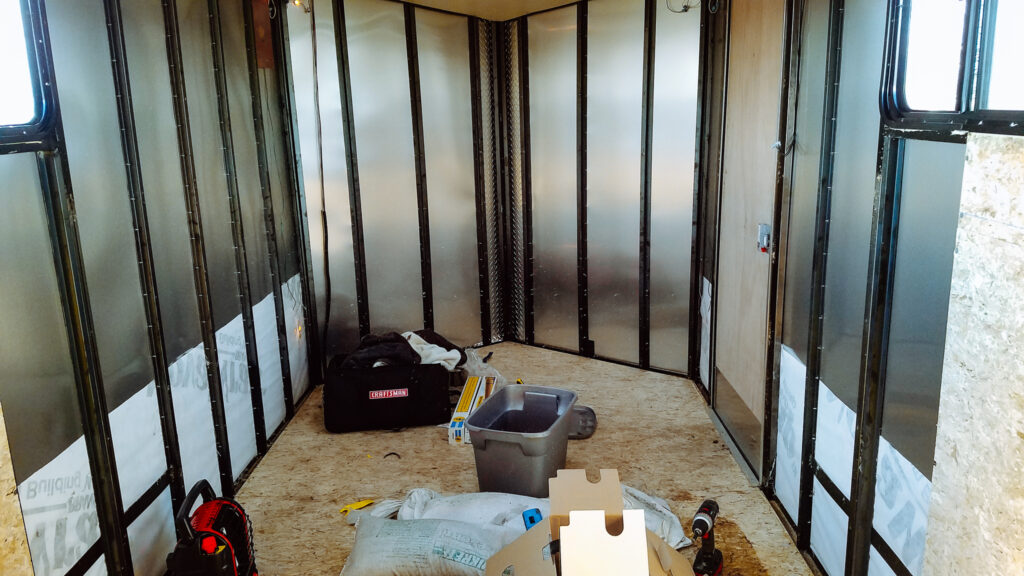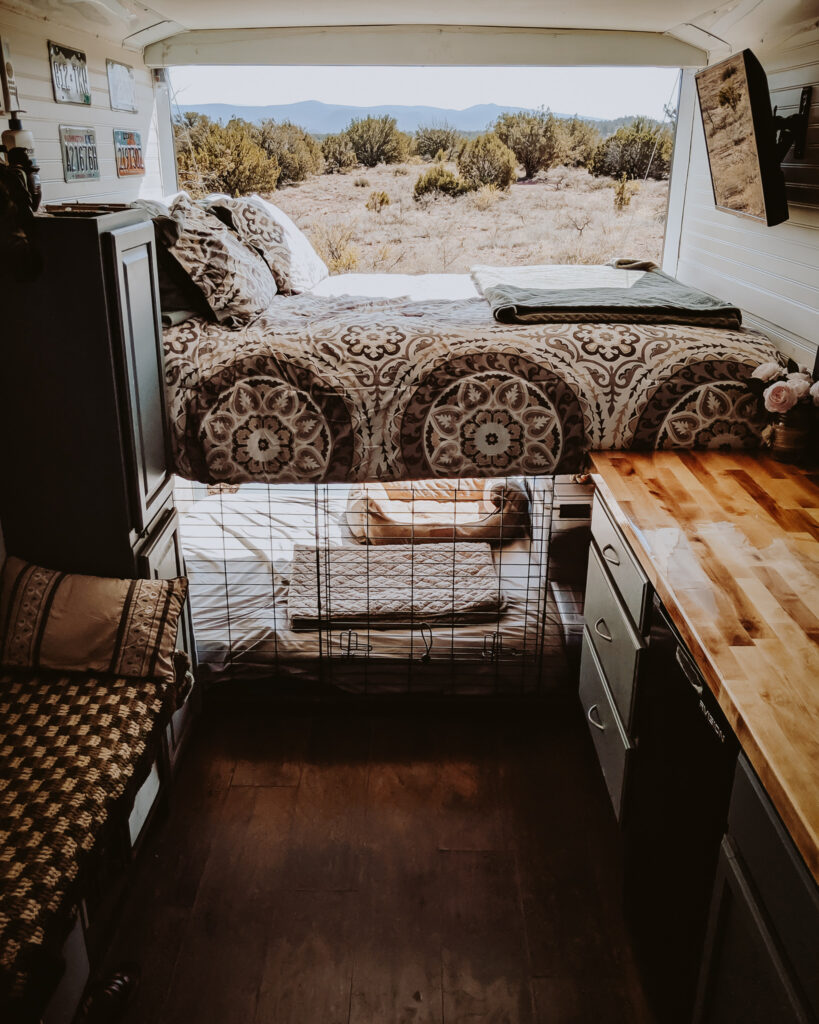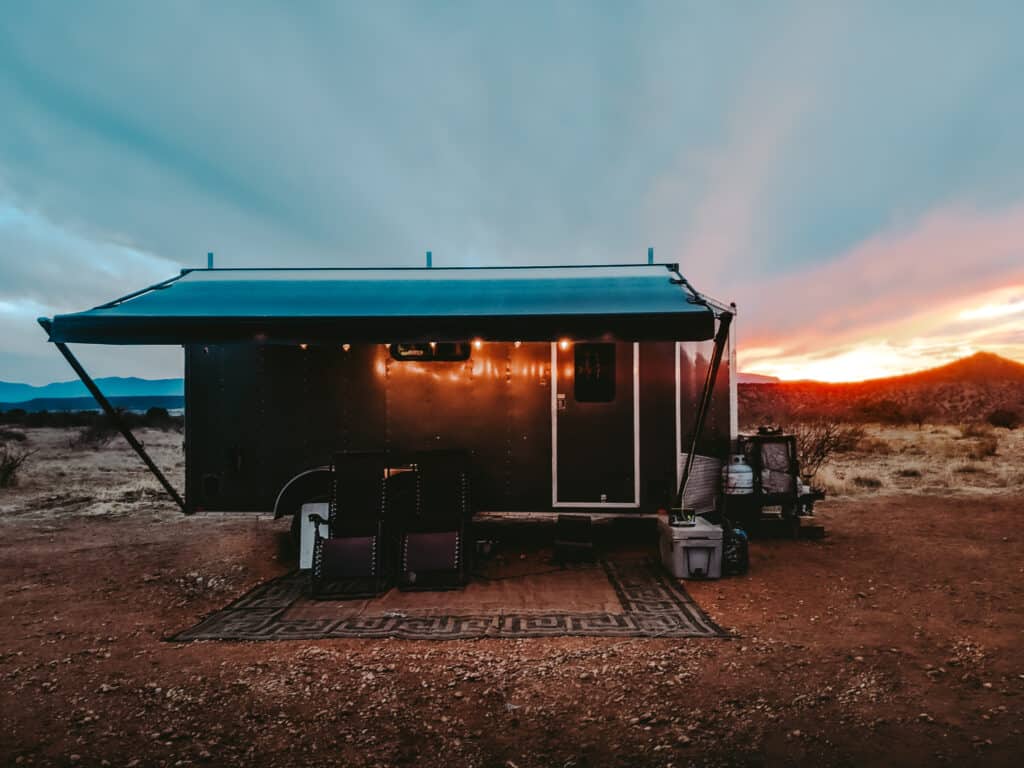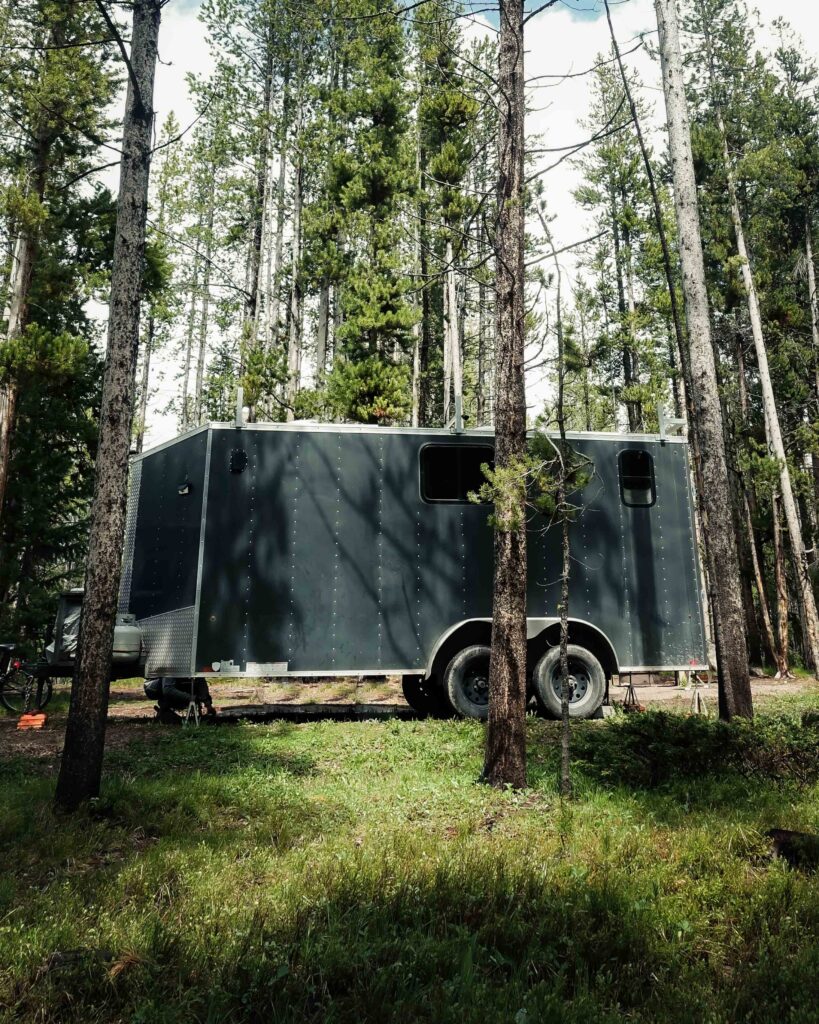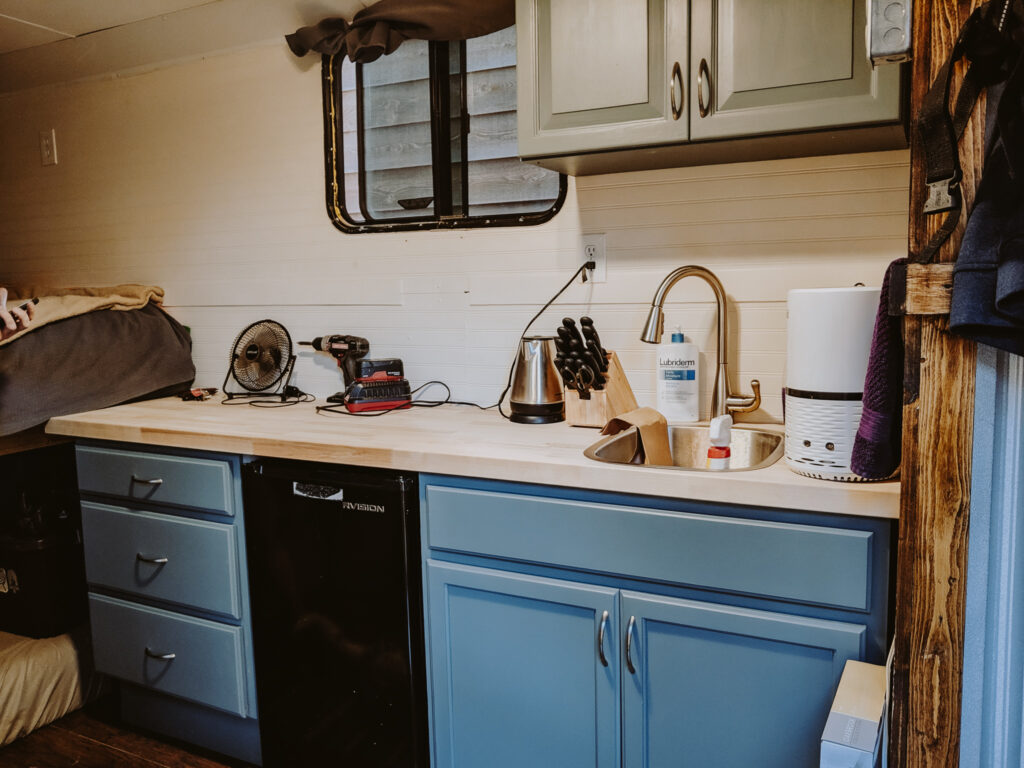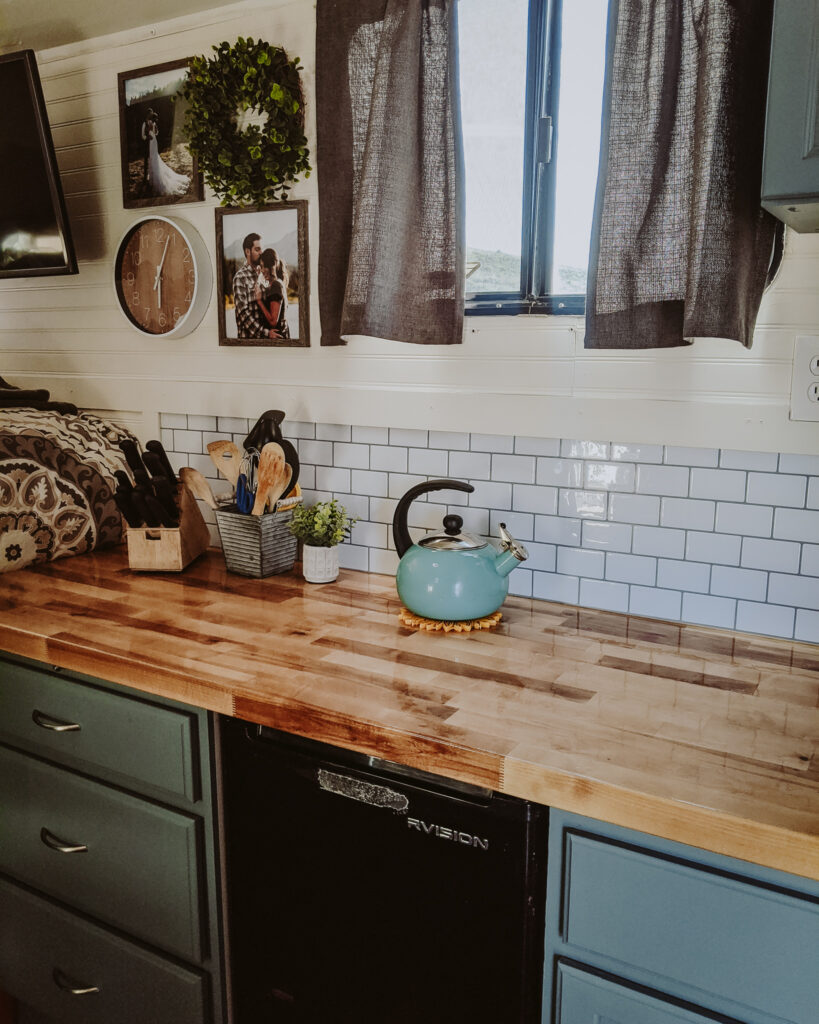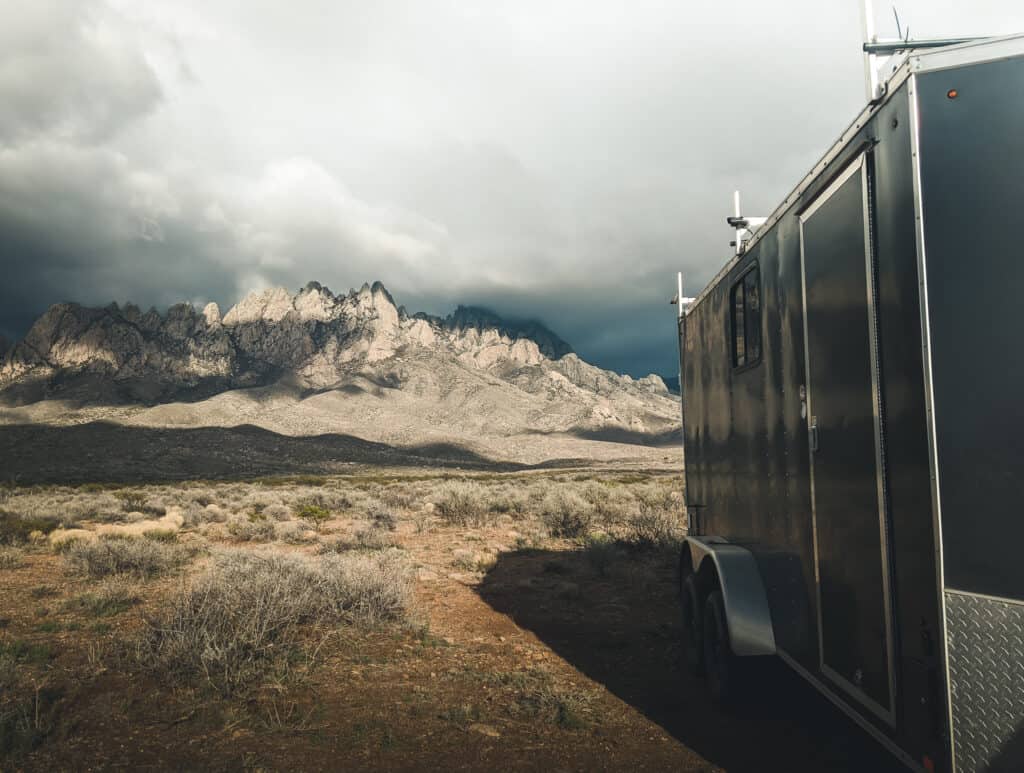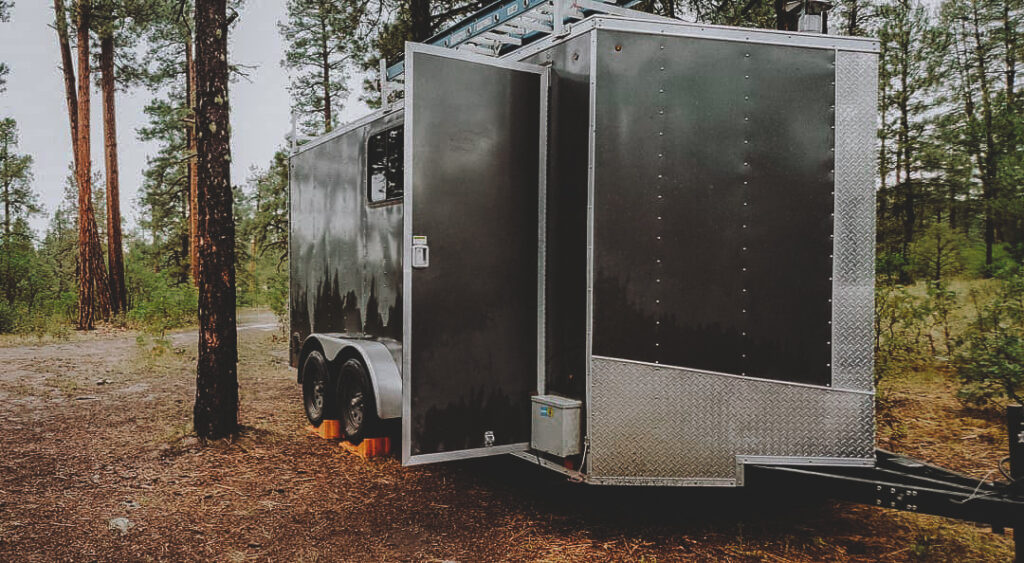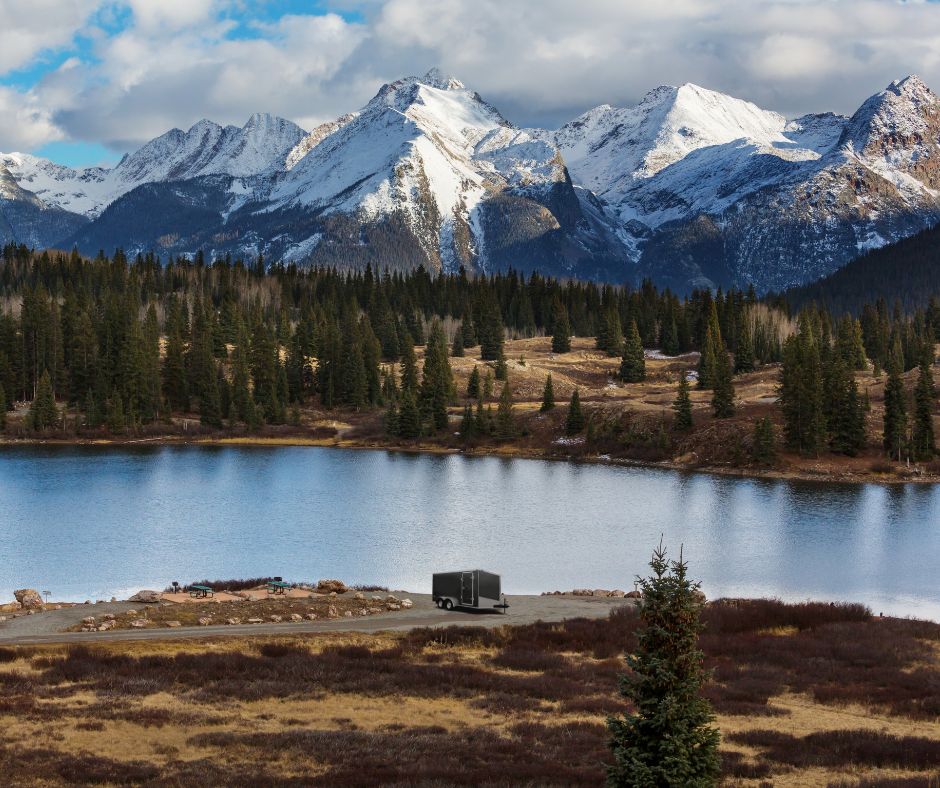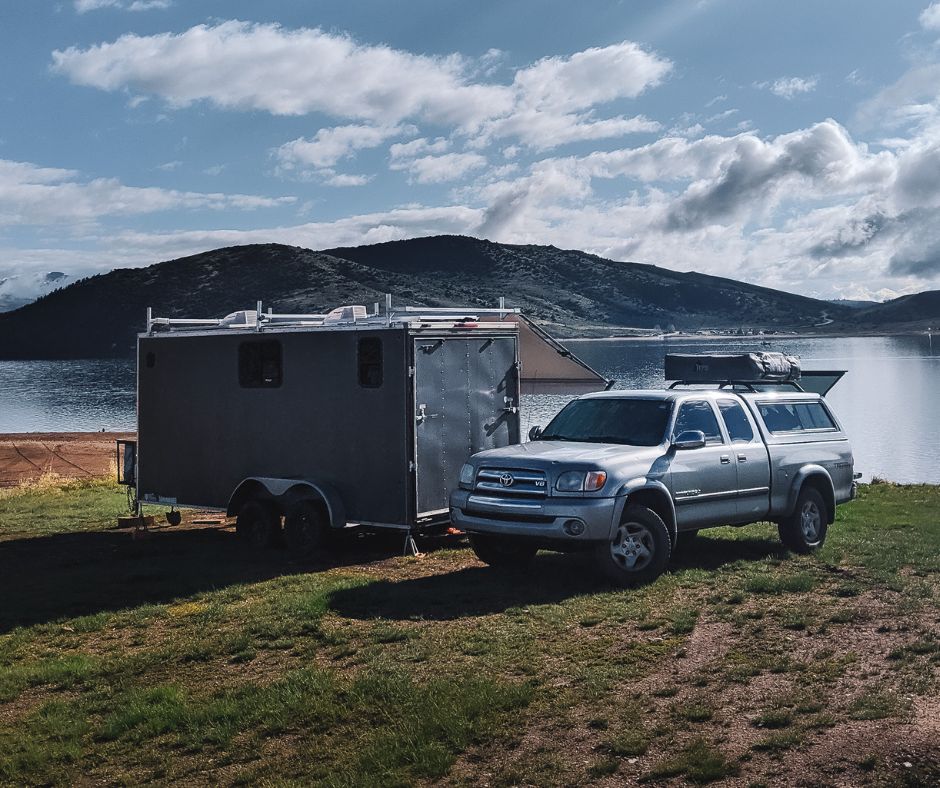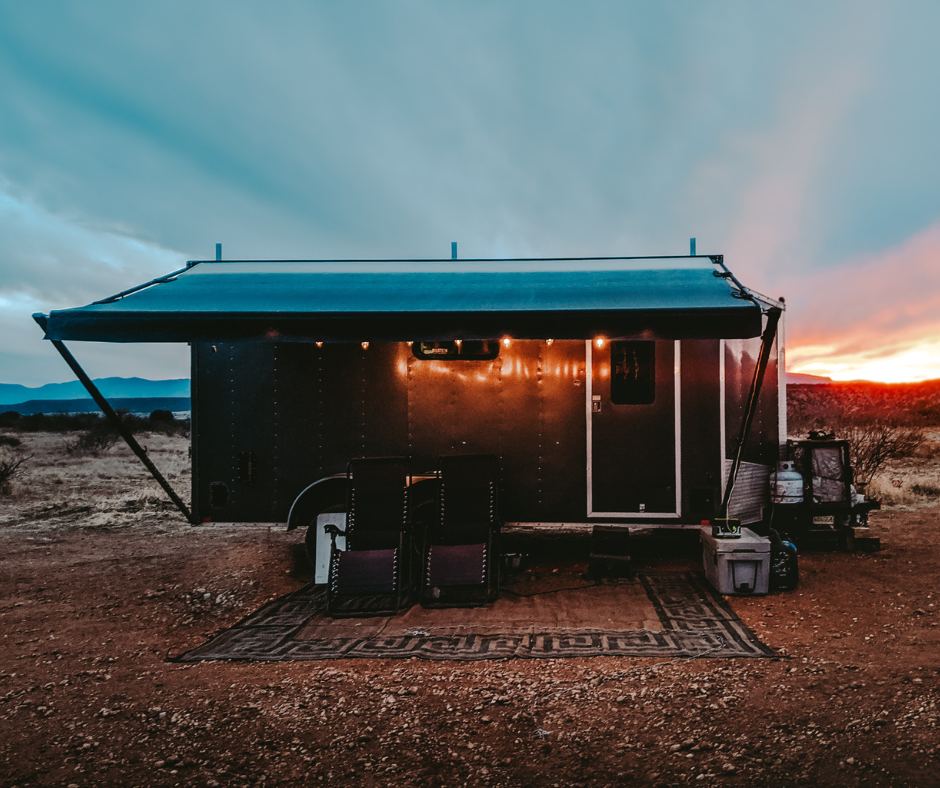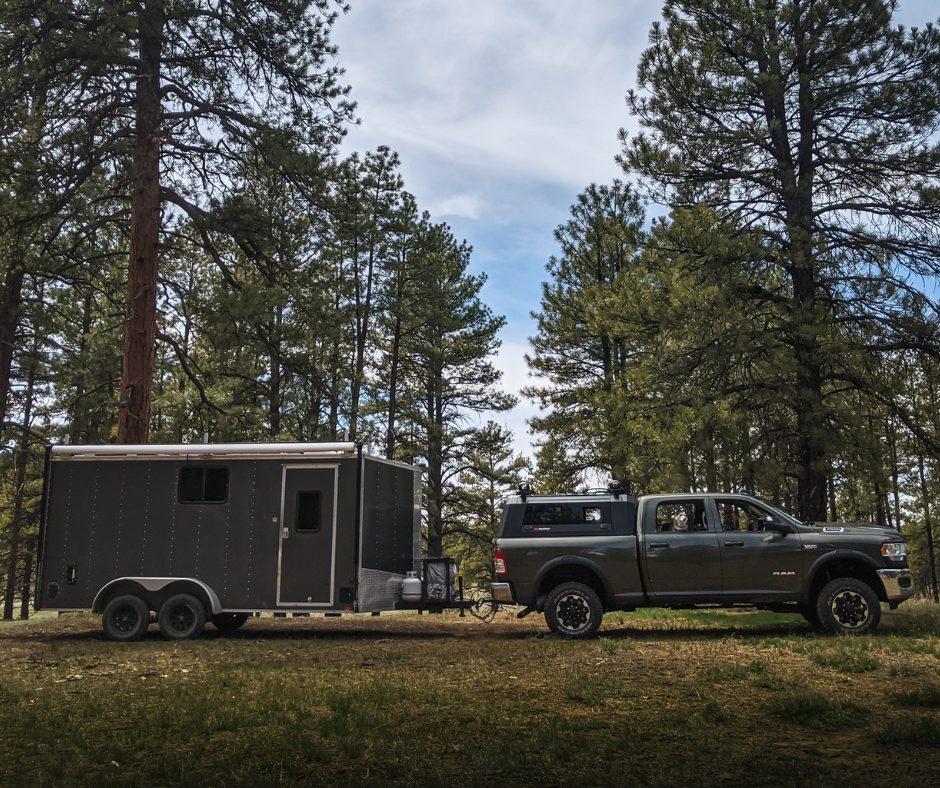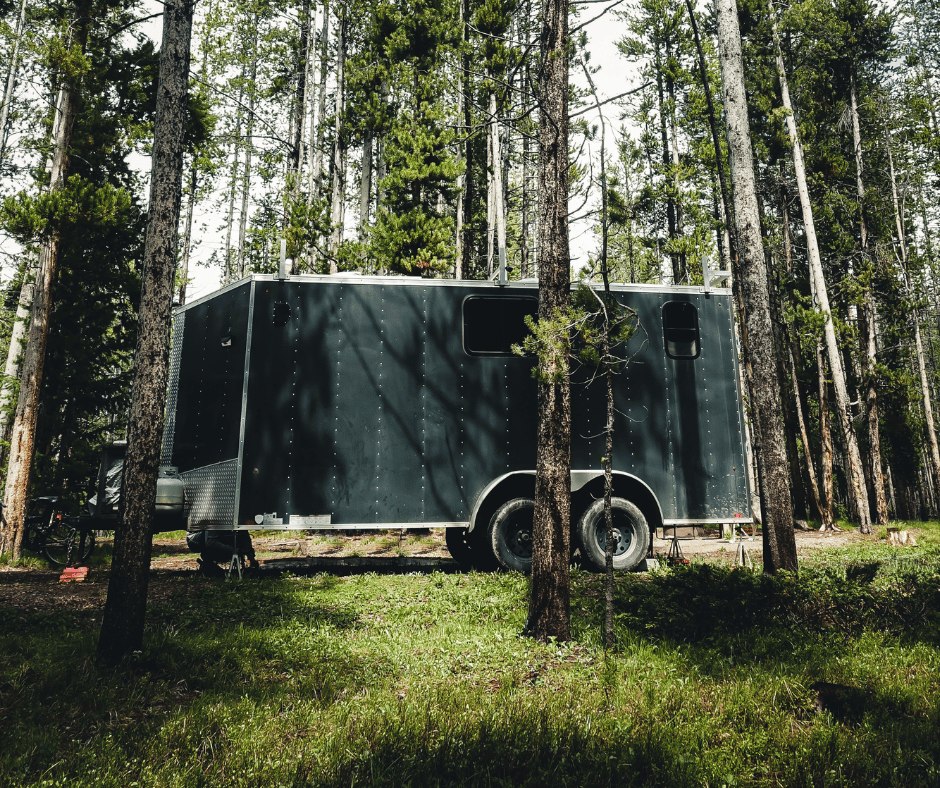15 Things to Consider When Finding The Best Camping Cargo Trailers For Sale

If you are a DIY enthusiast and love building things, then searching for the best cargo trailers for sale is the perfect project for you. Not only are cargo trailers highly functional, but they are also customizable to suit your needs. With a little bit of effort and imagination, you can transform a cargo trailer into a self-built camper.
Camping cargo trailers are a great option for those looking to enjoy the outdoors without having to pull a big travel trailer. But with so many different types, sizes, and features available on these versatile trailers, it can be overwhelming trying to understand the challenges and considerations that come with this type of project.
As someone who has gone through the process of choosing a cargo trailer to convert, I thought it would be helpful to put together this list of 15 factors you should consider when finding the perfect camping cargo trailer for sale.
Table of Contents
ToggleWe Built Our Dream Camper Out Of A Cargo Trailer
In 2016, I had the idea to live on the road full-time but didn’t want to go into debt to purchase a $25,000 travel trailer.
I needed something small enough to tow with my truck but big enough to live full-time with my dog Gunner. At the time, I needed a trailer that would be stealthy enough to park in neighborhoods while also being safe to leave my dog in while I was washing windows.
After purchasing my cargo trailer, I did everything from installing insulation and flooring to building out the shower and mounting a bed and table—I had a functional tiny home on wheels.
When I met my wife in 2018, we enjoyed traveling around in it together. In 2019, we decided to renovate it to add a few more creature comforts my wife insisted on having—like running water for the sink, a fridge, and additional storage space.
Until 2021, I lived full-time on the road with my dogs Gunner, Cruze, Bella, and my Wife Nicoll. I couldn’t have been happier with my decision.
Can You Turn A Cargo Trailer Into A Camper?
With their rising popularity, converting cargo trailers into miniature homes is becoming a trend that’s here to stay. Campers made from cargo trailers offer a combination of portability and comfort while saving you money in the process. With a bit of imagination, creativity, and some handy DIY skills, these trailers can quickly be transformed into an RV-style camper full of all your favorite creature comforts.
Step 1: Consider Your Needs and Determine a Layout
Step one in designing your cargo trailer conversion is to carefully plan and consider your specific needs and wants. This is crucial for determining the size and layout of your trailer. Here are some questions to ask yourself when planning your layout: Do you need barn doors or a ramp? V nose or Flat nose? What are you going to be hauling? How many people does the cargo trailer need to sleep? Is a seating area important to you? What does your ideal kitchen include?
For some, a 12-foot trailer may suffice, while others may require a larger 28-foot option. The key is to consider what you need to fit inside and how you want to utilize the space.
In my case, I knew I wanted a shower up front, a kitchen in the middle, and a platform bed in the back that could lift up and down to park my motorcycle underneath while traveling.
To design my trailer, I grabbed a piece of paper and pencil, and began sketching out various floor plans and layouts. I did this multiple times, constantly revising and coming up with new ideas until I was satisfied with the final design. Remember to take your time and be thorough in your planning, as this is the foundation for a successful cargo trailer conversion.
After much consideration, I decided that I needed a 16-foot cargo trailer at a minimum but also that was the maximum I was willing to allow my 2004 Toyota Tundra pickup truck to pull.
Here is what our cargo trailer to converted camper floor plan looked like:
2. Determine the Length/Width/Height
Step two in picking a cargo trailer to convert is determining the appropriate length, height, and width for your trailer. After finalizing your floor plan and layout, it’s important to consider the dimensions that will best accommodate all of your needs.
Regarding width, most cargo trailers come in many sizes. From 5ft, 6ft, 7ft and all the way up to 8 1/2 feet wide. The 8 1/2 feet wide option is typically used for hauling side-by-sides or UTVs, but I opted for the standard 7 foot wide option.
This way, the wheel wells were not inside the cargo trailer, leaving more space for my layout.
As far as length, you can get anything from 8 to 32 feet. Our cargo trailer was 16 feet long for a total interior space of 112 sq ft and had enough room for everything we needed.
I also made sure to choose a 7-foot ceiling height inside, which allowed for ample headroom and made it possible to add insulation in the roof. Keep in mind that the standard inside height of most cargo trailers is only about 6 feet, so if you’re taller, you may want to consider a higher ceiling height.
3. Steel or Aluminum
In my search for the perfect cargo trailer, I was very particular. I spent a lot of time researching different manufacturers and the pros and cons of steel and aluminum trailers.
When designing your cargo trailer conversion, it’s important to decide on the materials that your trailer will be constructed from. Currently, there are two main options: steel or aluminum. I originally wanted an aluminum trailer to save on weight, but after getting a price comparison, I realized that it was much more expensive than a steel trailer. For my 16-foot steel cargo trailer in 2016, I paid around $7000, but if I had chosen aluminum, the cost would have been around $10,000.
After living in a steel-constructed cargo trailer for almost 4 years, I have no regrets about my decision. Steel construction was a great choice for me, as I had no issues with the trailer and it fit my budget better. However, the weight of the steel construction was a bit of a downside, but it was manageable because I had a vehicle that could handle the extra weight.
4. New or Used Cargo Trailer?
When it comes to choosing whether to buy a new or used cargo trailer, there are a few factors to consider. Cargo trailers tend to hold their value well, so finding a truly good deal on a used trailer can be challenging. Another advantage of buying a new cargo trailer is that financing options are often available. This can be helpful if you’re looking to get on the road quickly and don’t have the cash upfront to purchase a trailer outright.
Keep in mind that a new trailer may come at a higher cost, but the peace of mind and added features may be worth the investment.
For me, I decided to go with a new cargo trailer because I was having trouble finding a used one with a ceiling height of seven feet, which was important for my needs. In late 2016, I went to a local dealer and custom ordered a new Look Cargo Trailer.
5. Tow Vehicle
When it comes to towing any kind of trailer, one of the most important considerations is whether your vehicle has the capacity to pull it safely. As you’re shopping for a cargo trailer, be sure to ask the dealership about the weight of the fully-equipped cargo trailer and compare it to your vehicle’s towing capacity.
It’s a good idea to choose a trailer that is at least 2,000 pounds lighter than your vehicle’s maximum towing capacity. This will provide a margin of safety and allow room for additional weight from camping gear, water, and other supplies.
Personally, when I purchased my 16ft cargo trailer, I knew it would weigh around 5,000 pounds once it was fully equipped. This realization led me to leave at least 2,000 pounds of open towing capacity for my truck. I’ve learned that many people make the mistake of maxing out their vehicles when towing, which can make it dangerous and uncomfortable to pull a trailer on long trips.
Unfavorable road conditions, such as high winds, rain, ice, snow, and bumpy roads, can damage an overloaded vehicle. It can also make the experience of camping and traveling less enjoyable. I remember owning a 2004 Toyota Tundra with a 4.7-liter V8, and my 16-foot cargo trailer was the maximum I would tow with that truck.
I even stopped at a cat scale, a place where you can weigh your vehicle and trailer, and discovered that my trailer weighed about 5,000 pounds with everything in it. My truck had a towing capacity of 7,000 pounds, so in my opinion, I barely had enough truck to pull my trailer comfortably for long distances. As a side note, my truck also had 350,000 miles on it, which can also lower your tow capacity because everything is starting to wear out.
6. Extending the Tongue of your Trailer
When it comes to buying a new or used cargo trailer, there are a few key options to consider that can make a big difference in the functionality and versatility of your trailer. One option that I wish I had known about earlier in my own research is extending the trailer tongue.
Personally, I decided to go with a 24-inch extension on my own trailer tongue, but I recommend at least a 12-inch extension for anyone in the market for a new cargo trailer. The extra room up front allows for sharper turns in tight spots, and it also opens up the possibility of adding propane tanks or other accessories to the tongue of your trailer.
It can be very difficult to add propane tanks or other accessories to a trailer without this extension, which is why I highly recommend considering this option when making your purchase.
For example, I ended up adding a mini split AC unit to the tongue of my trailer, and it would have been nearly impossible without the extra room provided by the extension. It may not seem like a big deal at first, but this one simple addition can make a huge difference in the versatility and functionality of your cargo trailer.
7. Having the Manufacturer Install Windows
If you’re thinking about buying a new cargo trailer, this tip will save you time and stress in the long run. Instead of installing the windows yourself, have the manufacturer do it for you when you purchase the trailer. Trust me, it’s worth it!
As someone who has done this before, I can tell you that installing windows on a cargo trailer can be a bit tricky. It requires cutting sheet metal and welding in metal bracing, which can be time-consuming and difficult if you’re not experienced. By having the manufacturer do it, you can avoid all that hassle.
Plus, there are some great benefits to having the manufacturer install the windows for you. For one, they’ll make sure that the windows are properly sealed and weatherproofed.
Another perk is that the windows will be installed in a way that is structurally sound and won’t compromise the integrity of your cargo trailer. And, you’ll have peace of mind knowing that the windows are installed by professionals who know what they’re doing.
I’ll be honest, having the manufacturer install the windows may cost a bit more upfront. But, in the long run, it will save you time, energy, and possibly even money by avoiding potential mistakes and issues that could arise from a DIY window installation.
Plus, it’s nice to have the windows installed and ready to go as soon as you get your new cargo trailer, so you can start using it right away. So, it’s worth considering it, if you’re thinking of buying a new cargo trailer.
8. Drop axles vs straight axles
Another important option to consider when buying or building a cargo trailer is the type of axles used. The standard cargo trailer usually comes with drop axles, but these can be problematic if you plan on doing any off-roading. Drop axles will lower the height of your cargo trailer and can cause it to drag on the ground, potentially damaging the trailer and your cargo.
A better option for off-roading is to ask the dealer or manufacturer to install straight axles on your cargo trailer. Straight axles will add more ground height to your cargo trailer, making it less likely to drag on the ground and reducing the risk of damage. This is something I wish I had done, as I ended up flipping the axles on my trailer, which was a big pain and added extra cost to my overall expenses.
It’s important to keep in mind that straight axles can be more expensive. However, if you plan on using your cargo trailer for off-roading, they are a much better option in terms of durability and safety.
9. Picking Heavy Duty Axles
Another important option to consider when buying a cargo trailer is the type of axles used. The standard cargo trailer usually comes with 3500-pound axles, but if you plan on carrying heavy loads or turning your cargo trailer into a camper, you may want to consider upgrading to 5000-pound axles.
Upgraded axles will give you more capacity to carry heavy loads and will make your trailer more valuable if you plan on selling it in the future. Additionally, by having more weight capacity you will not have to worry about overloading the trailer and wearing it out prematurely.
It’s important to keep in mind that upgraded axles can be more expensive than standard axles. However, if you plan on using your cargo trailer for heavy loads or as a camper, they are a much better option in terms of durability and safety.
10. Adding Plywood to the Roof
When I first started thinking about building out my cargo trailer, I didn’t really know where to begin. I had a lot of ideas about what I wanted to do, but I didn’t know how to make it happen. One of the things I didn’t consider at first was the roof of my cargo trailer. I didn’t think about the fact that I might need to add solar panels or other things to the roof, and that I would need a solid backing to screw them into.
It wasn’t until I started building my cargo trailer that I realized the importance of adding plywood between the roof metal frame and the sheet metal. Without this plywood, I would have had to either screw straight into the frame or bolt and nut things onto the sheet metal, which would have been a headache and could have caused leaks or other problems.
Luckily, I was able to ask the manufacturer if they could add the plywood to the roof of my cargo trailer before it was built. If you’re thinking about building out a cargo trailer of your own, I highly recommend you do the same. It will save you a lot of time and stress in the long run. If the manufacturer can’t add the plywood, make sure you add all your solar panels before putting up the inside ceiling to ensure everything is fastened securely and doesn’t leak.
11. RV Door Lock
Another great option to consider for your cargo trailer is an RV door with a locking mechanism. You can either ask your dealer to add this feature when you’re building a cargo trailer, or if you’re buying a used cargo trailer that doesn’t have one, you can purchase one from a local RV dealer or online. They’re relatively affordable and easy to install.
Keep in mind that if you do end up installing the RV door yourself, it may require cutting sheet metal. But it’s a great option to have when turning your cargo trailer into a camper.
12. Roof Vent Fans
Another option that is often overlooked when building or customizing a cargo trailer is RV vent fans. Most cargo trailers only come with one vent fan, but if you’re planning to use your cargo trailer for camping or living in, then you’ll want to consider adding at least two vent fans.
I personally added one vent fan in the front and one in the middle of my cargo trailer. It was a great addition as it allowed me to bring in more sunlight during the day and helped to circulate fresh air throughout the trailer. Especially during hot weather, having multiple vent fans blowing out hot air helped to keep the inside of my cargo trailer cool and comfortable.
If I were to do it all over again, I would have added three vent fans instead of two, just to bring in even more sunlight and have even more ventilation options. Having multiple vent fans also increases the amount of fresh air that flows in and out of the cargo trailer. It’s especially important if you’re living in your cargo trailer for an extended period of time.
13. Consider the Material Used to Make the Roof
When buying a cargo trailer, it’s important to be aware of the different roofing materials that manufacturers use. One of the biggest differences to watch out for is the number of sheets of sheet metal used to make the roof deck.
Some manufacturers will use two or three sheets of sheet metal and crimp them together to make the roof deck. This method may save on materials and production cost, but it’s not the best option for a cargo trailer.
The problem with this method is that the crimp can loosen over time, and that can cause water leaks in your roof. This can lead to damage to your cargo and costly repairs. To avoid this problem, make sure that the cargo trailer you’re buying has a one piece sheet metal roof. This will ensure that you never have to worry about leaks in your roof and your cargo will be safe and dry.
14. Adding a Rooftop AC Unit from the Manufacture
Adding a rooftop AC unit right from the start is something that I wish I had done because it would have saved me time and money in the long run.
Adding a rooftop AC unit eliminates the need for additional framing or finding the perfect place to install it. This can save you a lot of time and hassle, especially during the summer months when the heat can be unbearable.
Trust me, as soon as the summer months come, the first thing you’ll regret not having is an AC unit.
After enduring a few hot summers, We ended up installing a mini split. But it would have been nice to have an AC unit on top of the cargo trailer instead.
15. Best Cargo Trailer Brands to Consider
Homesteader Trailers: GVWR: 7,000 – 9,950 pounds (bumper pull) These trailers come in single or tandem axle for heavier loads, along with several rear door options. Many models are built with an V-Nose which is said to be more aerodynamic, and definitely increases floor space.
Stealth Trailers: GVWR: 2000-21,000 pounds (bumper pull) Stealth Trailers offers a wide range from their entry-level Mustang to the heavy monster hauler like the Hercules. Many models have the choice between a rear single barn door or a ramp, as well as a side entry door option. Most bumper pull models sport the aerodynamic V-nose and front aluminum treadplate.
Haulmark: GVWR: 2,990–9,990 pounds (bumper pull) Haulmark has many options when it comes to cargo trailers and all models have the option of a side door and various rear door types.
Look Trailers: GVWR: 2,990-9,950 (bumper pull) Look Trailers offer many different sizes and styles that are both cost effective yet still dependable when it comes time to haul your cargo. All Look Trailer models feature tube steel construction with ¾ inch plywood floors and walls covered with durable aluminum skins. This was the company I picked to build my trailer.
Finding The Best Camping Cargo Trailers for Sale
Buying a cargo trailer can be a great investment, especially if you’re planning on using it as a camper. We hope this guide has helped you on your journey to finding the best cargo trailers for sale.
Check out some of our other blog posts about how we built and designed the inside of our cargo trailer.
And if you ever have any questions or need additional guidance, feel free to reach out to us by leaving a comment or sending us an email.



